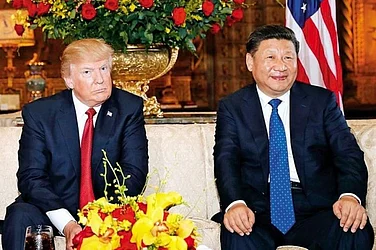The United Auto Workers (UAW) union has launched an unprecedented strike against all three major U.S. automakers, collectively known as the Detroit Three. This marks the first time in history that such a coordinated strike has occurred, triggered by the failure to reach a new contract agreement before the Thursday 11:59 p.m. deadline.
Targeted Strikes: A Strategic Approach
The strike, however, does not involve the entire UAW membership of approximately 150,000 employees across the Big Three automakers. Instead, it commences with workers at specific Midwest auto plants:
1. General Motors assembly plant in Wentzville, Missouri.
2. Stellantis assembly plant in Toledo, Ohio.
3. A section of a Ford plant in Wayne, Michigan.
At present, this mobilizes just under 13,000 workers, constituting less than 9 percent of the UAW workforce within these companies.
Shawn Fain's "Stand Up Strike" Strategy
UAW President Shawn Fain has adopted a "stand up strike" strategy, designed to apply pressure on the automakers strategically. Additional locations may join the strike as negotiations evolve, keeping the companies guessing about potential disruptions to their operations.
A Defining Moment
During a Facebook Live event, Fain emphasized the gravity of the situation, stating, "This is our generation's defining moment. The money is there, the cause is righteous, and the world is watching."
A Departure from Tradition
These targeted strikes represent a departure from the UAW's traditional approach of orchestrating full workforce walkouts at individual companies. Furthermore, the UAW has opted for simultaneous negotiations with all three automakers, deviating from its previous method of reaching a deal with one company and then pressuring the others to follow suit.
Demands and Confrontational Approach
Fain, the first democratically elected leader of the UAW, has pursued a more confrontational negotiation style than his predecessors. Key economic demands include:
- A 40 percent wage increase in alignment with CEO raises.
- The restoration of pensions and retiree healthcare.
- Cost-of-living adjustments.
Transition to Electric Vehicles
Amidst the strike, the auto industry's transition to electric vehicles remains a focal point. The UAW seeks protections for workers as companies invest in electric vehicle production, raising concerns about the impact on traditional auto jobs.
Potential Economic Implications
If the strike persists, it could pose a potential threat to the U.S. economy. A six-week strike involving all 150,000 UAW auto union members could have an estimated 0.2 percent impact on fourth-quarter GDP.
Global Attention
As the strike unfolds, the world watches closely, recognizing the significance of this pivotal moment in labor negotiations within the automotive industry.


























